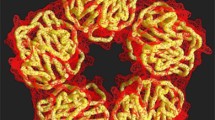Summary
We present a comparative study of different biological tests in the acute phase of inflammation. The study was performed in 80 patients after surgical procedures in septic cases. We have compared the levels of C-Reactive Protein (CRP), C3, C3a, C4, To, sedimentation rate, and the leucocyte count. The analysis was made before surgery and every week until the ninth week after surgery. The variations in CRP which ocurred very early were extensive. The increase ranged between 200 and 600% after the surgical procedure. In cases without complications the CRP level returned to normal within 20 days. The study showed the CRP as the most specific and sensitive biological test of the acute phase of inflammation. However this biological test cannot differentiate between an acute infective and a severe inflammatory process.
Résumé
Les auteurs présentent une étude comparative de différents tests biologiques lors de la phase aiguë de l’infection. L’étude concerne 80 patients après traitement chirurgical en milieu septique. Les auteurs ont comparé les taux de C-réactive Protéine (CRP, C3, C3a, C4), vitesse de sédimentation et numération des leucocytes. L’analyse fut effectuée avant l’intervention chirurgicale et chaque semaine pendant les 9 premières semaines post-opératoires. Les taux de CRP augmentent très rapidament (200 à 600 %) après le geste chirurgical. Dans les cas sans complications le taux revient à la normale en moins de 20 jours. L’étude montre que le taux de CRP est le test le plus spécifique et le plus sensible de la phase aiguë de l’infection. Néanmoins ce test ne permet pas de différencier une infection aiguë d’un processus inflammatoire important, non infectieux.
Similar content being viewed by others
Change history
28 May 2021
A Correction to this paper has been published: https://doi.org/10.1007/s00590-021-02973-7
References
Ellitsgaard N, Andersson AP, Jensen KV, Jorgensen M (1991) Changes in C-reactive protein and erythrocyte sedimentation rate after hip fractures. Int Orthop 15: 311–314
Fearon DT (1987) Complemento. In: Cecil Tratado de Medicina Interna. Mexico
Jenny G, Schaub JM, Férard G, Métais P, Kempf I (1986) Intérêt du dosage de la C réactive protéine dans l’infection ostéoarticulaire. Rev Chir Orthop 72: 197–201
Kilpatrick JM, Volanakis JE (1991) Molecular genetics, structure, and function of C-reactive protein. Immunol Res 10: 43–53
Kindmark CO (1969) Quantitative measurement of C-reactive protein in serum. Clin Chim Acta 26: 95–98
Kushner I (1982) The phenomenon of the acute phase response. Ann NY Acad Sci 389: 39–48
Kushner I (1991) C-reactive protein in rheumatology. Arthr Rheum 34: 1065–1068
Laurent P (1981) La protéine C réactive. Sa place dans la réponse inflammatoire. Nouv Presse Med 10: 2817–2820
MacLeod CM, Avery OT (1941) The occurrence during acute infections of a protein not normally present in the blood: II. Isolation and properties of the reactive protein. J Exp Med 73: 183–190
Mallya RK, Berry H, Mace BEW, De Beer FC, Pepys MB (1982a) Diurnal variations of erythocyte sedimentation rate related to feeding. Lancet i: 389–390
Mallya RK, Berry H, Mace BEW, De Beer FC, Pepys MB (1982b) Correlation of clinical parameters of disease activity in rheumatoid arthritis with serum concentrations of C-reactive protein and erythocyte sedimentation rate. J Rheum 9: 224–228
Navarro JM, Mendoza J, Leiva J, Rodriguez Contreras R, de le Rosa M (1990) C-reactive protein as a prognostic indicator in acute brucellosis. Diagn Microbiol Infect Dis 13: 269–270
Oliviera EB, Gotschlich EG, Liu TY (1977) Primary structure of human C reactive protein. Proc Natl Acad Sci 74: 3148–3151
Pepys MB, Baltz ML (1983) Acute phase proteins with special reference to C-reactive protein and related proteins (pentaxins) and serum amyloid A protein. Adv Immunol 34: 141–211
Sanzen L, Carlsson AS (1989) The diagnostic value of C-reactive protein in infected total hip arthroplasties. J Bone Joint Surg [Br] 71-B: 638–641
Thelander U, Larsson S (1992) Quantitation of C-reactive protein levels and erythrocyte sedimentation rate after spinal surgery. Spine 17: 400–404
Tillet WS, Francis T (1930) Serological reactions in pneumonia with a non-protein somatic fraction of pneumococcus. J Exp Med 52: 561–571
Volanakis JE (1982) Complement activation by C-reactive protein complexes. Ann NY Acad Sci 389: 235–250
Author information
Authors and Affiliations
Additional information
European Bone and Joint Infection Society Meeting, München, Germany, October 7–9, 1993
Rights and permissions
About this article
Cite this article
Morales, J.J., Cabo, J., Sabate, A.F. et al. The biological tests used in acute-phase of inflammation in bone infection. Eur J Orthop Surg Traumatol 5, 33–36 (1995). https://doi.org/10.1007/BF02716211
Received:
Accepted:
Issue Date:
DOI: https://doi.org/10.1007/BF02716211




